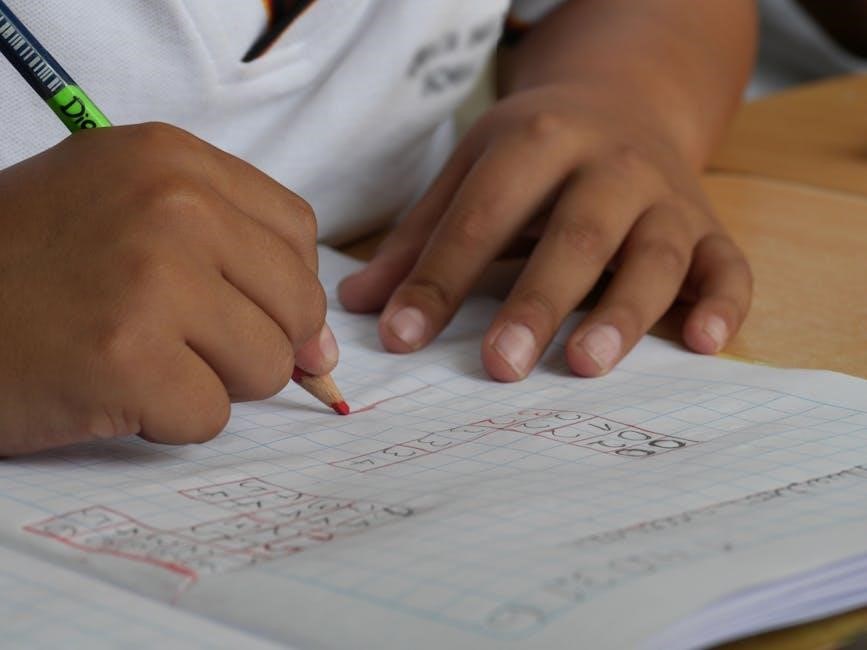Accessing Year 5 maths reasoning test papers in PDF format, complete with answers, is a fantastic resource. These tests help children practice problem-solving. They also help with critical thinking skills. Practicing with PDFs prepares them well. This practice is great for assessments and boosting confidence.
Year 5 maths reasoning tests are designed to assess a student’s ability to apply mathematical knowledge. These tests emphasize problem-solving skills. They also focus on logical thinking, rather than rote memorization. These assessments often feature a variety of question types. The question types include multiple-choice, short answer, and more complex problem-solving scenarios.
The primary goal of these tests is to evaluate how well students can understand. They also show how well they can interpret and analyze mathematical problems. The tests also focus on how well they can formulate solutions. Reasoning tests differ from standard maths tests. Reasoning tests require students to explain their methods. Students must demonstrate a clear understanding of the underlying mathematical concepts. These tests often involve real-world scenarios.

These scenarios require students to apply their knowledge in practical contexts. Year 5 is a crucial year in primary education. Students solidify their understanding of fundamental mathematical principles. They also prepare for more advanced topics in subsequent years. Reasoning tests play a vital role in this process. They help teachers identify areas where students may need additional support. They also ensure that students are developing a strong foundation in mathematical reasoning.
Benefits of Using PDF Test Papers
Using PDF test papers for Year 5 maths reasoning offers numerous advantages. Firstly, the accessibility of PDFs makes them incredibly convenient for both students and teachers. They can be easily downloaded and printed from anywhere with an internet connection, eliminating the need for physical copies and reducing costs.
PDFs retain their formatting regardless of the device used, ensuring that the test papers appear as intended, with clear layouts and legible fonts. This consistency is crucial for students to understand the questions without any visual distractions. Additionally, PDFs can be easily shared electronically, allowing teachers to distribute practice materials quickly and efficiently, whether for classroom use or homework assignments.
Furthermore, PDF test papers often come with answer keys, enabling students to self-assess their performance and identify areas where they need improvement. This immediate feedback is invaluable for reinforcing learning and building confidence. Teachers can also use these answer keys to efficiently grade and track student progress, tailoring their instruction to address specific learning gaps.
Moreover, the digital format allows for interactive features such as fillable forms and annotations, making the learning experience more engaging. Students can type their answers directly into the PDF, saving time and promoting a more organized approach to problem-solving. Overall, the use of PDF test papers enhances the learning process by providing flexibility, convenience, and immediate feedback.
Key Topics Covered in Year 5 Reasoning Tests
Year 5 maths reasoning tests comprehensively assess a range of mathematical concepts and problem-solving skills. A primary focus is on number and place value, where students are expected to demonstrate understanding of numbers up to 1,000,000, including reading, writing, and comparing them. They should also be proficient in rounding numbers to the nearest 10, 100, 1,000, 10,000, and 100,000.
Addition and subtraction are heavily tested, with an emphasis on multi-digit calculations and problem-solving in context. Multiplication and division skills are also crucial, including multiplying and dividing numbers by 10, 100, and 1,000, as well as solving problems involving factors, multiples, prime numbers, and square numbers.
Fractions, decimals, and percentages form another significant area of assessment. Students should be able to add, subtract, multiply, and divide fractions with related denominators. Converting between fractions, decimals, and percentages is also a key skill. Measurement topics include length, mass, volume, and time. Students need to solve problems involving units of measurement and convert between different units.
Geometry is covered through properties of shapes, including identifying and classifying different types of triangles and quadrilaterals. Students should also be able to calculate the perimeter and area of simple shapes. Finally, reasoning tests often include questions on statistics, such as interpreting data presented in tables, charts, and graphs.

Example Questions and Solution Strategies
Year 5 maths reasoning tests often include questions that require a multi-step approach. For example, a question might ask: “A scientist collects three samples of soil weighing 45 kg, 32 kg, and 114 kg. What is the total weight of the soil samples?” The solution involves adding the weights together: 45 + 32 + 114 = 191 kg.
Another common type of question involves interpreting data. For instance, a table might show the temperature recorded at different times of the day. The question could ask: “What is the highest temperature recorded?” To solve this, students must carefully read the table and identify the highest value.
Fraction-based problems are also frequent. A question might state: “Jenna has more left. How much more does she have?” Solving this requires comparing fractions and finding the difference between them.
When tackling these questions, encourage students to read carefully and identify the key information. Breaking down the problem into smaller steps can make it more manageable. Visual aids, such as diagrams or number lines, can also be helpful. Emphasize the importance of checking answers to ensure they are reasonable and accurate.
By practicing these strategies, students can improve their problem-solving skills and boost their confidence in tackling maths reasoning tests.
Accessing Free Year 5 Maths Reasoning Test Papers in PDF Format
Finding free Year 5 maths reasoning test papers in PDF format is easier than you might think. Numerous websites offer these valuable resources to support children’s learning. Start by searching online using keywords like “Year 5 maths reasoning test PDF free.” Look for reputable educational websites, school resources, and teacher blogs.
Many educational organizations provide free sample papers as part of their outreach programs. These papers often come with answer keys, making them ideal for practice and assessment. Some websites may require a free registration to access their resources, while others offer them directly without any sign-up.
Be sure to check the quality and relevance of the papers. Look for papers that align with the current curriculum and cover a range of topics. It’s also helpful to find papers that include a variety of question types, such as multiple choice, short answer, and problem-solving tasks.
Once you’ve found suitable papers, download them in PDF format. This allows you to easily print them out for practice or view them on a tablet or computer. Remember to also download the corresponding answer keys to check your child’s work and identify areas for improvement.
Understanding the Answer Key and Marking Scheme
The answer key and marking scheme are vital components of any Year 5 maths reasoning test paper. They provide a clear understanding of the correct answers. They also show how marks are allocated for each question. This understanding is crucial for both students and educators.
The answer key typically lists the correct answer for each question in the test paper. It serves as a reference point for checking answers. It also helps identify areas where mistakes were made. The marking scheme goes a step further by providing a detailed breakdown of how marks are awarded.
For some questions, partial credit may be given for showing the correct method. Even if the final answer is incorrect. This encourages students to demonstrate their understanding of the problem-solving process. It also rewards logical reasoning skills.
Understanding the marking scheme can help students focus on the most important aspects of each question. They can learn to allocate their time effectively during the test. Teachers can also use the marking scheme to assess student performance and identify areas where additional support may be needed.
By carefully reviewing the answer key and marking scheme, students can gain valuable insights into their strengths and weaknesses. They can improve their problem-solving skills and boost their confidence.
How to Effectively Use Practice Papers for Revision
Practice papers are invaluable tools for Year 5 maths revision. To use them effectively, begin by setting aside dedicated time. Create a distraction-free environment that mirrors test conditions. This helps simulate the actual exam experience.
Start by reviewing the topics covered in the practice paper. Identify areas where your child feels less confident. Focus on these areas first, using textbooks and online resources for support. Encourage your child to attempt each question independently. This promotes critical thinking and problem-solving skills.
After completing the paper, use the answer key to mark the work accurately. Discuss any mistakes with your child, explaining the correct methods. Encourage them to identify patterns in their errors. This helps prevent similar mistakes in the future.
Repeat practice papers regularly, tracking progress over time. Celebrate improvements to motivate your child. Use the results to identify areas needing further attention; Adapt your revision strategy accordingly.
Practice papers should not be seen as a chore, but as an opportunity to build confidence. With consistent effort, your child can approach the Year 5 maths reasoning test with greater assurance.
Tips for Improving Reasoning Skills in Maths

Improving reasoning skills in maths involves more than just memorizing formulas. It requires developing a deeper understanding of mathematical concepts. Encourage your child to explain their reasoning aloud. This helps identify gaps in their understanding and reinforces their thought processes.
Regularly engage in problem-solving activities that require critical thinking. These could include puzzles, brain teasers, and real-life scenarios. Encourage your child to break down complex problems into smaller, manageable steps. Teach them to identify key information and discard irrelevant details.
Use visual aids such as diagrams, charts, and graphs to represent mathematical concepts. This can help your child visualize the relationships between different elements. Encourage them to create their own visual aids to deepen their understanding.
Promote a growth mindset by emphasizing effort and perseverance over innate ability. Encourage your child to view mistakes as learning opportunities. Celebrate their progress and encourage them to take on new challenges.
Make maths a fun and engaging activity by incorporating games and interactive tools. This can help spark your child’s interest and motivation. Seek out resources that provide opportunities for collaborative problem-solving.
By following these tips, you can help your child develop strong reasoning skills in maths. This will benefit them not only in their academic pursuits but also in their everyday lives.
Common Mistakes to Avoid in the Reasoning Test
In Year 5 maths reasoning tests, certain errors frequently appear. One common mistake is misreading the question. Always read each question carefully. Highlight key words. Ensure you understand what is being asked before attempting to answer.
Another pitfall is neglecting to show your working. Even if the final answer is incorrect, showing your steps can earn partial credit. It also allows teachers to identify where the misunderstanding occurred. Double-check calculations to minimize arithmetic errors.
Time management is another crucial aspect. Avoid spending too long on a single question. If you are stuck, move on and return to it later if time permits. Practice with timed tests to improve your speed and accuracy.
Failing to use appropriate units is also a common mistake. Ensure your answer includes the correct units, such as cm, m, kg, or g. Pay attention to the units given in the question and convert if necessary.
Overlooking key information within word problems can lead to incorrect solutions. Extract all relevant data from the problem. Organize it in a clear and logical manner. Use diagrams or charts if necessary.
By being aware of these common mistakes, Year 5 students can improve their performance. Also, they can achieve better results in their maths reasoning tests. Consistent practice and attention to detail are essential for success.
Parent and Teacher Resources for Supporting Year 5 Maths
Parents and teachers play vital roles in supporting Year 5 maths education. Several resources can aid this process effectively. For parents, creating a supportive home environment is key. Regular practice sessions, using resources like PDF test papers, can reinforce learning.
Teachers can utilize a variety of tools in the classroom. Interactive whiteboards, online maths games, and group activities can make learning engaging. Providing differentiated instruction ensures that all students’ needs are met.
Websites like Khan Academy and BBC Bitesize offer free maths resources. These platforms provide video tutorials, practice exercises, and quizzes. They cover a wide range of topics aligned with the Year 5 curriculum.
Textbooks and workbooks are also valuable resources. They offer structured lessons and practice problems. Ensure that students have access to these materials, both at school and at home.
Parent-teacher conferences are crucial for communication. Discussing a child’s progress, strengths, and areas for improvement helps create a collaborative approach. Teachers can provide parents with specific strategies to support their child’s learning at home.
Encouraging a positive attitude towards maths is essential. Make maths relatable to real-life situations. Show its relevance in everyday activities. This helps students appreciate its importance and builds confidence.
Assessing Progress and Identifying Areas for Improvement
Regularly assessing progress in Year 5 maths is crucial for identifying areas needing improvement. Utilize various assessment methods to gain a comprehensive understanding of each student’s strengths and weaknesses. Start by administering the Year 5 maths reasoning test papers in PDF format. These tests provide valuable insights into a student’s problem-solving and critical-thinking abilities.
Analyze the results of these tests carefully. Identify specific topics or question types where students consistently struggle. For example, if a student frequently makes errors in fractions or decimals, focus on reinforcing those concepts through targeted instruction and practice.

In addition to formal assessments, incorporate informal assessment techniques into your teaching. Observe students during class activities, ask probing questions, and review their homework assignments. These ongoing assessments provide real-time feedback on their understanding of the material.
Encourage students to self-assess their own learning. Ask them to reflect on their strengths and weaknesses, and to identify areas where they need additional support. This metacognitive process helps them take ownership of their learning.
Use the assessment data to inform your instructional decisions. Adjust your teaching strategies, provide differentiated instruction, and offer additional support to students who are struggling. Regularly monitor their progress to ensure that they are making gains.
Communicate assessment results to parents. Provide them with clear and concise feedback on their child’s progress. Explain the areas where their child excels and the areas where they need additional support. Work together to develop a plan to address these areas.

